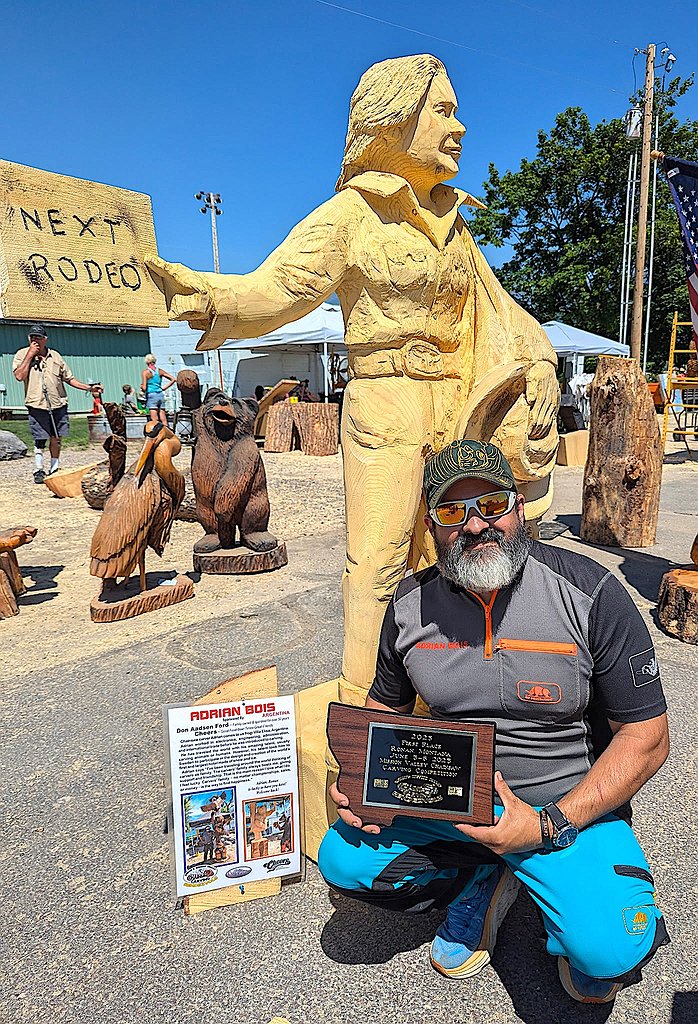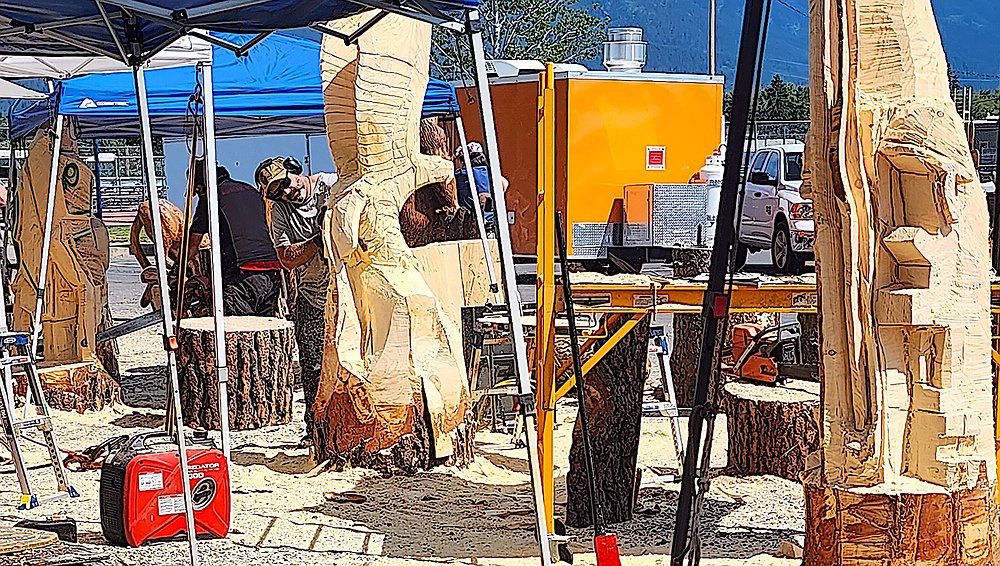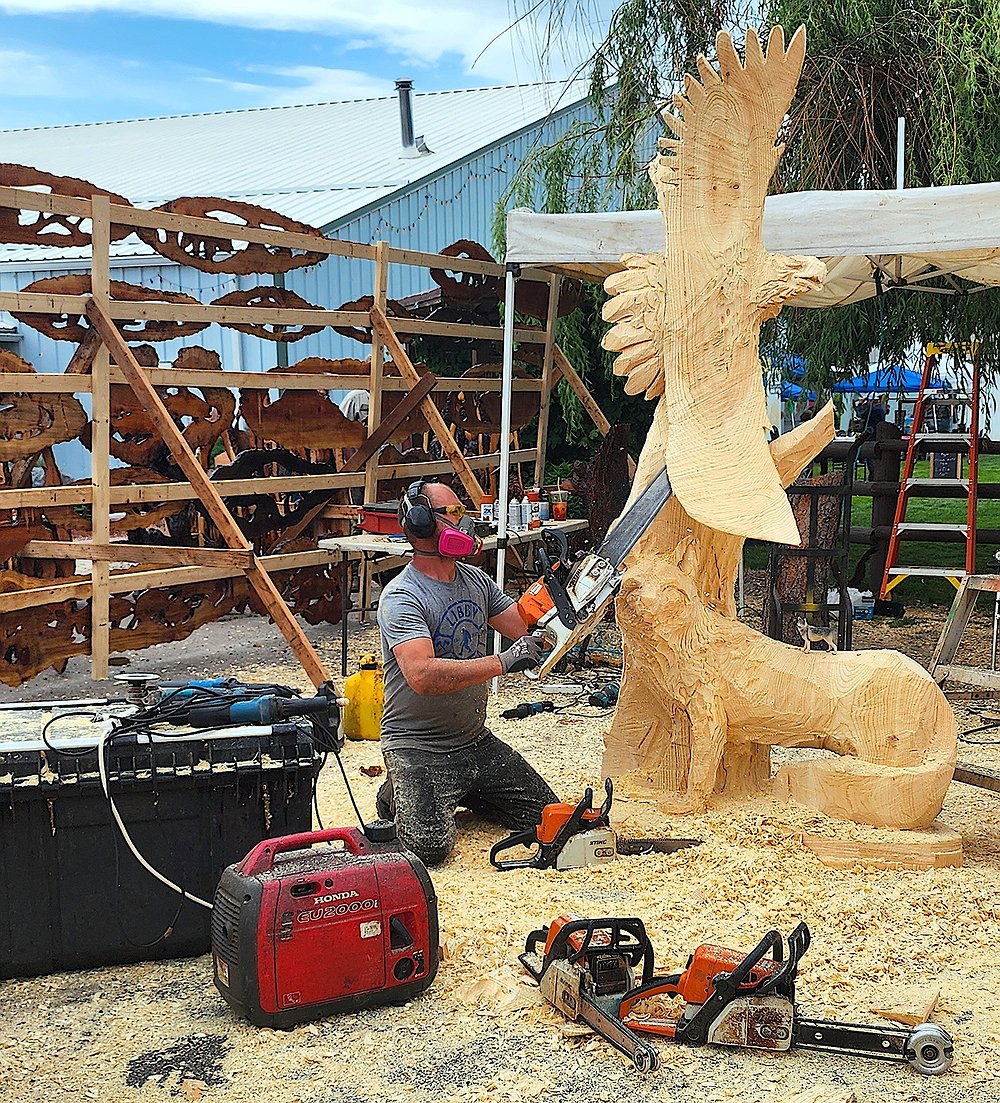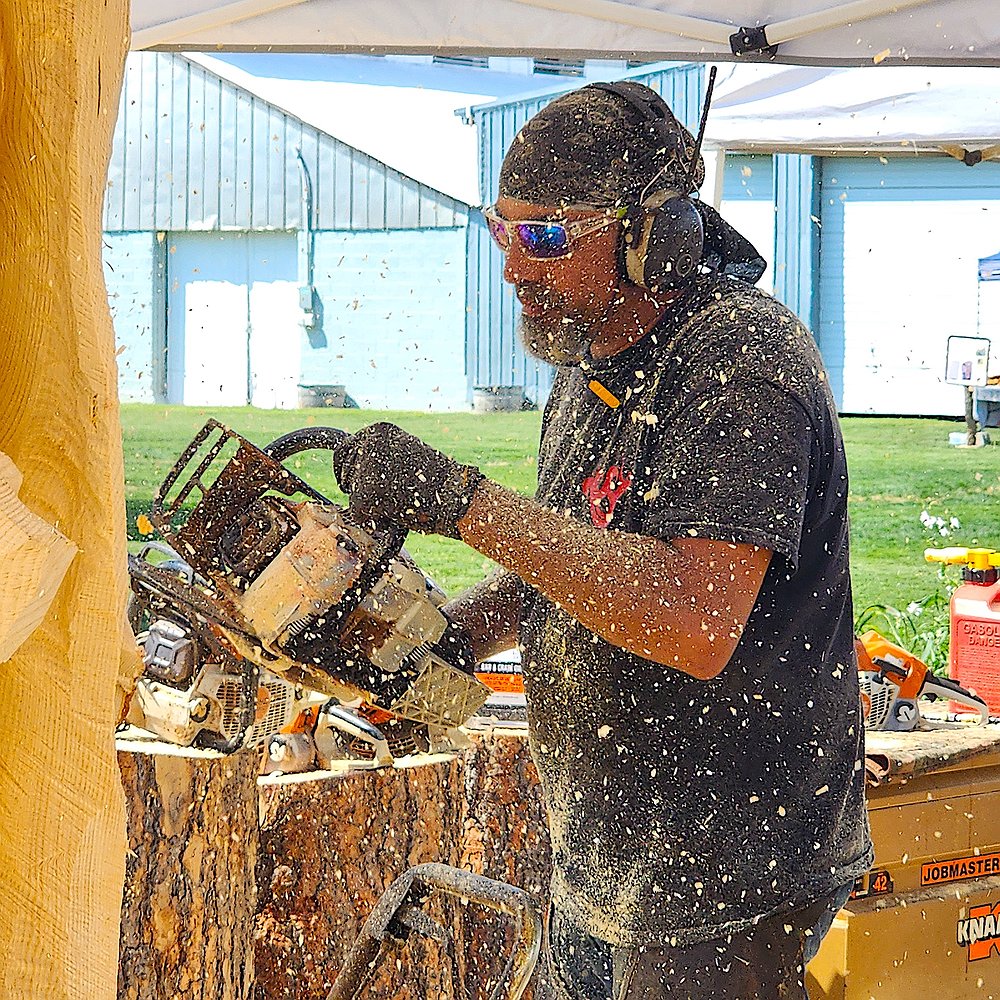Sawdust flies at Ronan's Chainsaw Rendezvous
Chainsaws were growling, grumbling and whirring amid a nest of extension cords, drifts of sawdust, and many bottles of water. Must have been the annual Mission Valley Chainsaw Carvers Rendezvous in Ronan. It began with move-in day on Thursday, and carving Friday, Saturday and Sunday.
An international group, with one Canadian and one Argentinian, the carvers each had their own eight-foot Ponderosa pine log to carve. Some were veterans of Ronan’s rendezvous, and some were first-timers.
As well as their major piece, the carvers created “quick carves”— four quick carves on Friday, two on Saturday, then one on Sunday. The Friday pieces were sold at an auction Friday evening, as a pair of sisters debated which was the perfect carving to give their dad for Father’s Day.
Several carvers mentioned the lovely scenery. One man watching the carvers said he and his wife always come and pick out a piece to buy. High schoolers came to watch the action or to shovel sawdust and wheel it away.
Vendors dotted the Ronan Fairgrounds offering artisan-made items, food, coffee and lemonade. There were picnic tables for lunch or a chance to cool off in the green and shady fairgrounds.
Adrian Bois of Villa Elisa, Argentina, won first place; veteran chainsaw artist Ken G. Braun Jr. of Montrose, Colo., took second; and Hayden Wright of Maple Valley, Wash., was third. The People’s Choice award went to Anthony Robinson of Hoquiam, Wash.
Other carvers this year were: Alex Pricob, Renton, Wash., but from Moldovia originally; Brent Passwater, Bigfork; Brigette Lochhead, Surrey, British Columbia; Matt Ounsworth, Fort Collins, Colo.; Thor from Earth, Hoquiam, Wash.; Pauline Cormier, Columbus, Mont.; Julie Zimmerman, Missoula; and Danny Hensen, Sandpoint, Idaho.
Carving out some time with Hayden Wright
Guido made the trip from Maple Valley, Wash., with his buddy, chainsaw carver Hayden Wright, and Hayden’s girlfriend, Jade. Guido played with his ball, got pets from Jade, slept in the shade, and rolled around in the grass while Wright toiled in the sun.
But Wright loves carving. He grew up in Boothbay, Maine. After high school graduation he “chased the snow” to Washington state in 2014 because he knew he had to ski the West Coast mountains– especially at Stevens Pass.
Wright had always worked with his hands, building houses and boats, stitching sails, and landscaping.
Then in the fall of 2020, he watched a YouTube video on chainsaw carving, was drawn to the power tools, and “pushed himself.” His high-school art teacher had urged him to try different media, so Wright gave it a whirl.
Wright was selling some pieces by the side of the road when Alex Precob happened to drive by. A chainsaw carver himself, Precob pulled over.
Precob, originally from Moldova, had been carving for 12 to 15 years at that time. He asked if Wright had ever been to a chainsaw carving show and got him into one a couple of weeks later.
Wright likes “to jump around and do all sorts of things” when he’s carving. For instance, he carved a wolf head balanced on a tree branch and another three-D piece of a heron in an oval with lots of negative space.
“Everybody likes animals,” he said. “They come in so many shapes, sizes and personalities. Some run, some fly, some swim.”
Using the contest log, an eight-foot chunk of Ponderosa pine that’s between 20 to 30 inches in diameter, Wright was carving a shaman/merman. The piece has human features and an eagle landing on its hand.
“There’s some abstractness to it,” he said, “and negative space.”
Wright had found the rough shapes on Friday, and then sought “to show where the muscles lie. The hands are kind of blocked out. I need to turn the fingers into little rounded-off fingers, not so thick and sausage-like.”
His saws have eight or nine different power heads with different bars on them, from a big 28” bar with a 3/8” chain to a 6” bar “with a tiny chain and a really tiny tip and no sprocket, only meant for small details.”
Carvers may use chainsaws all the way down to die grinders, sanders, chisels and Dremel tools, big and small.
“I’m more of a power carver,” he said. “I don’t have the confidence with hand tools.”
Wright was enjoying the crowd diversity, particularly the high school kids who came over to watch.
“I like to talk to younger kids,” he said. “Who knows? They might be interested in something like this. It’s not that a lot of kids think of art as a profession. It’s cool; it makes it more real to see someone making a living with their artwork.”
Wright’s art has taken him around the world. The last three winters he’s gone to a carving competition in Lithuania in March. Besides serving hearty food, the Lithuanians give the carvers really big oak logs. The wood is similar to pine, but with no sap.
“Oak is consistent in color and hardness; the colors are all the same so it’s easy to piece sculptures back together,” he explained.
Wright also visited the “cold capital of the world” when he was invited to an ice-carving competition in Mongolia in January.
“Shows are a really good way to get introduced to people,” he said. “They’re performance art since the original use for a chainsaw was to cut wood and produce firewood.”









